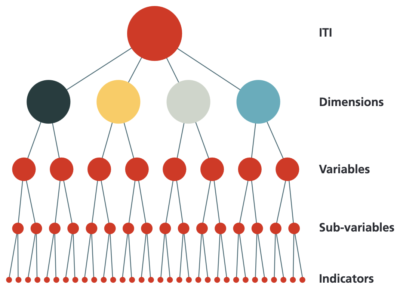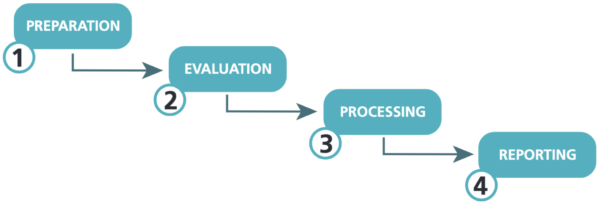CoST Initiative
CoST – the Infrastructure Transparency Initiative (CoST) is one of the leading global initiatives improving transparency and accountability in public infrastructure.
CoST works with government, private sector and civil society to promote the disclosure, validation, and interpretation of data from infrastructure projects. This helps to inform and empower citizens and enables them to hold decision-makers to account. The experience indicates that informed citizens and responsive public institutions help drive reforms that reduce mismanagement, inefficiency, corruption, and the risks posed to the public from poor quality infrastructure.
CoST works globally with members spanning four continents. In addition to working with CoST members at national and sub-national levels, CoST works internationally with a range of partners to share and promote experience and knowledge on transparency, participation, and accountability.
The CoST approach is focused on four core features: multi-stakeholder working, disclosure, assurance, and social accountability.
ITI Methodology
The Infrastructure Transparency Index (ITI) draws on four building blocks known as dimensions, namely: enabling environment; capacities and processes; citizen participation; and information disclosure.
The first dimension evaluates the national or sub-national context with its legal framework. The indicators in the first dimension are evaluated using information that is typically available from online sources such as websites containing national regulatory frameworks and information focused on transparency, public procurement, public infrastructure and public finances.
The other three dimensions evaluate the capacities and transparency outcomes in procuring entities (these are the State agencies developing public infrastructure). The data required to evaluate the indicators from the second and third dimensions are captured by a survey that has to be undertaken by a selected government officer at each entity. For the fourth dimension, indicators are evaluated using information that is typically available from online sources such as websites containing data on public infrastructure projects, public procurement and other websites showing information related to public infrastructure.

The ITI Structure
Each of the four dimensions is divided into a series of components to allow for their comprehensive evaluation. The result is a four-level hierarchy: the dimensions are determined by variables, which are in turn shaped by sub-variables, which are derived from indicators as shown in the figure.
All the indicators are individually evaluated and scored. A set of weighted indicator scores then gives a sub-variable score; a set of weighted sub-variable scores gives a variable score; and a set of weighted variable scores gives a dimension score. A national or sub-national ITI score is finally obtained from the weighted sum of the four dimension scores.
With this structure, the ITI aims to: i) assess the levels of transparency and capabilities to be transparent in public infrastructure over time; ii) assess and promote accountability, as well as peer learning among procuring entities; iii) raise awareness and promote the adoption of international data standards, like the IDS and the OC4IDS; iv) enable consistent comparison across countries to promote peer learning and to recognize common strengths and weaknesses; v) raise awareness about the strengths and weaknesses in public infrastructure transparency; vi) guide public leaders, at the centralised and decentralised levels, to build capacities to strengthen transparency and accountability in the sector; and vii) develop a collaborative agenda, among stakeholders, to raise transparency and accountability standards in the infrastructure sector.
ITI Principles
The design and development of the ITI is based on the following principles:
Furthermore, each time the ITI is implemented in one country, province or state the process is guided by the following principles:
As with any other index, the impact of the ITI depends on the extent to which its results are used by those responsible for decision-making.
ITI Implementation
The ITI is designed to be implemented at a national or sub-national scale. This means that the implementation coverage is flexible. For example, one country, one province or state can decide to implement it without requiring other countries, provinces or states to participate in the process, or a regional evaluation effort can be conducted to assess a group of countries, provinces or states in the same process.
Though the ITI is mainly used by CoST members, it can also be used in countries not participating in the programme. If the methodology set out in the manual is followed, results will be comparable within a specific country and between countries, facilitating peer to peer learning at a broader scale and the identification of common strengths and weaknesses.
The ITI implementation process follows a sequence of four stages to arrive at the final results.

The ITI implementation process
- The preparation stage involves working and defining several aspects to enable and facilitate the data collection. For example, to set an evaluation team, to train the team, to get and adapt materials such as templates and data processing worksheets, to define the period of study, to define the entities and projects to be evaluated, and to conduct key preparation events, such as kickoff meetings and webinars.
- Later, the required data is collected in the evaluation stage. The ITI uses two different methods to do this, desktop research and an entity survey. The two dimensions evaluated by desktop research include two or three different data reviews, and the two dimensions evaluated with the survey require specific evidence and endorsement from the entities, as well as its own data review process.
- During the data processing stage, the collected data is converted to scores in the range zero to one hundred (0−100) for each indicator, sub-variable, variable and dimension, based on their assessment and weightings. All ITI components have associated differentiated weightings according to their relative importance.
- Finally, the reporting stage involves the preparation, publication and public presentation of ITI results. The stage also involves follow-up meetings, training, or other forms of support to stakeholders. In this final stage it is important to set commitments at the centralised and decentralised levels to promote transparency and accountability as a mean to improve management of public infrastructure for the common good.











